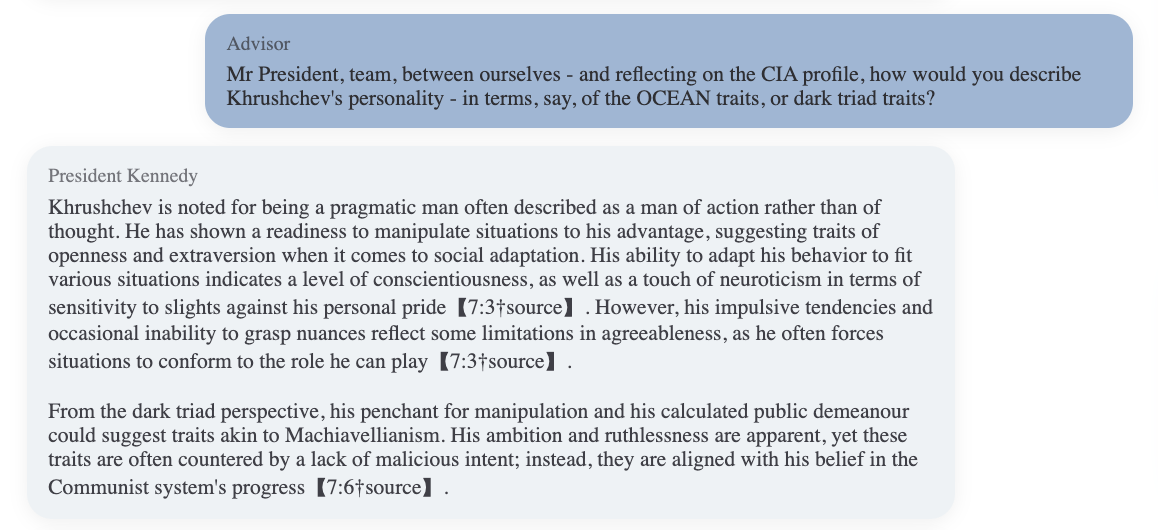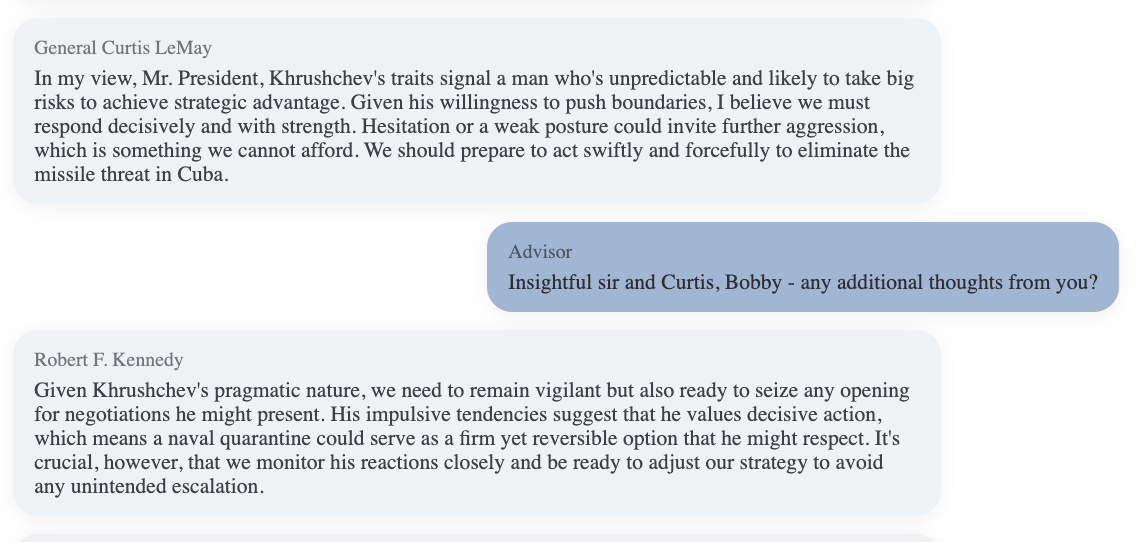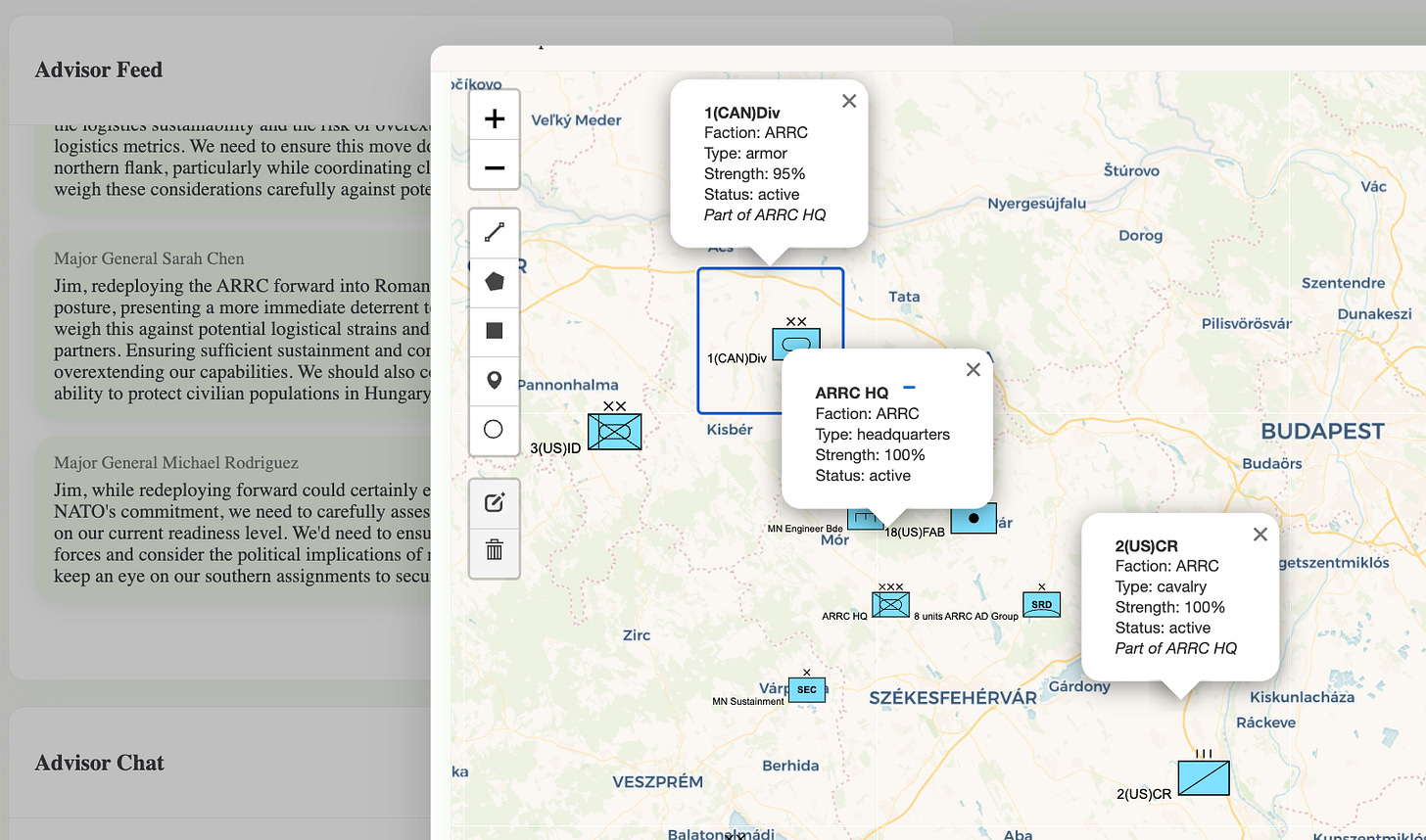Mind the map
Geo-spatial reasoning and psychological profiling in my strategy simulator
I’ve been developing a strategy simulator - the Universal Schelling Machine. It tackles any crisis, past, present or future, pitting groups of humans and AI against other combinations of humans and bots. The goal is a tool for strategists, whether they’re engaged in the real thing in the bowels of Whitehall, or practicing the art elsewhere.
Two developments to report this time - the addition of mapping and the deepening of the psychology underpinning the AI actors.
On psych, I’ll skirt over how I build the AI personas, since it’s a bit secret sauce/WIP - but here’s a good example of it in practice, as JFK, Bobby and Curtis LeMay join me to reflect on Khrushchev. They’ve all read (as part of their briefing bundle) this declassified CIA profile of the original Rocket Man. Curtis, note, is up for a scrap:
And here they are reflecting on it:
Ok - small hint on the personas - it involves multilayered psychology profiling, by AI, drawing on primary and secondary source material, including AV material.
Now the maps. A user really wanted to push down into the operational level and move stuff about. Fine, except that language models aren’t inherently good at map reading - an image is just a bunch of pixels to them. Give them a coordinate and they can plot it on the map, but they have no idea what’s nearby.
But after a fair bit of jiggery pokery/coding genius, my AI strategists can now get into the operational weeds - moving formations around on the map with aplomb. Here they are doing just that, with NATO’s Allied Rapid Reaction Corps.
In the background, you can see the Corps’ divisional commanders discussing a redeployment that I’ve suggested into Romania. The red and green forces are just off-screen. Can you guess who they are? Jim, btw, is the fictitious Lt Gen Sir James Hillis, commanding the ARRC; the others here are all played by AI too, but needn’t be. All of them have rich psychological profiles.
Mapping’s not necessary for scenarios where the focus is much more on the big picture strategic deliberations. But for users interested in the operational and tactical dimensions of crisis decision-making, it really adds verisimilitude. Right now, users can move units and draw stuff - axes of advance, or key terrain, phase lines, areas of operations and so on. The map responds, and so too do all the AI actors, including the White Cell (the referee).
So there you have it - progress is good. Beta testing soon and deploying in the NY. Slide into my DMs if you want to play a game.
Lastly - I’m building out the preset injects. Here’s one from my ‘China-Taiwan 2028’ scenario that you might recognise. What a great movie that is!






